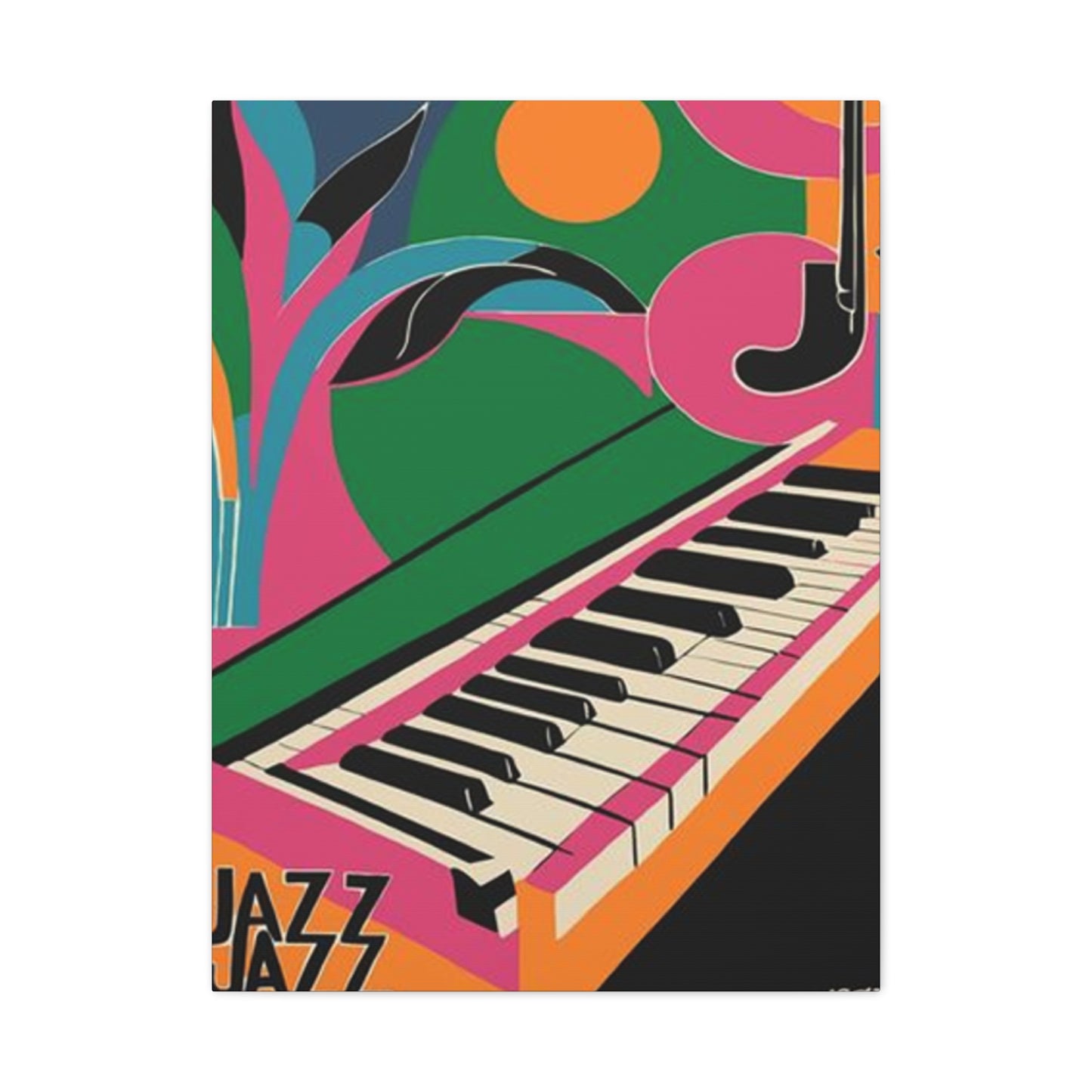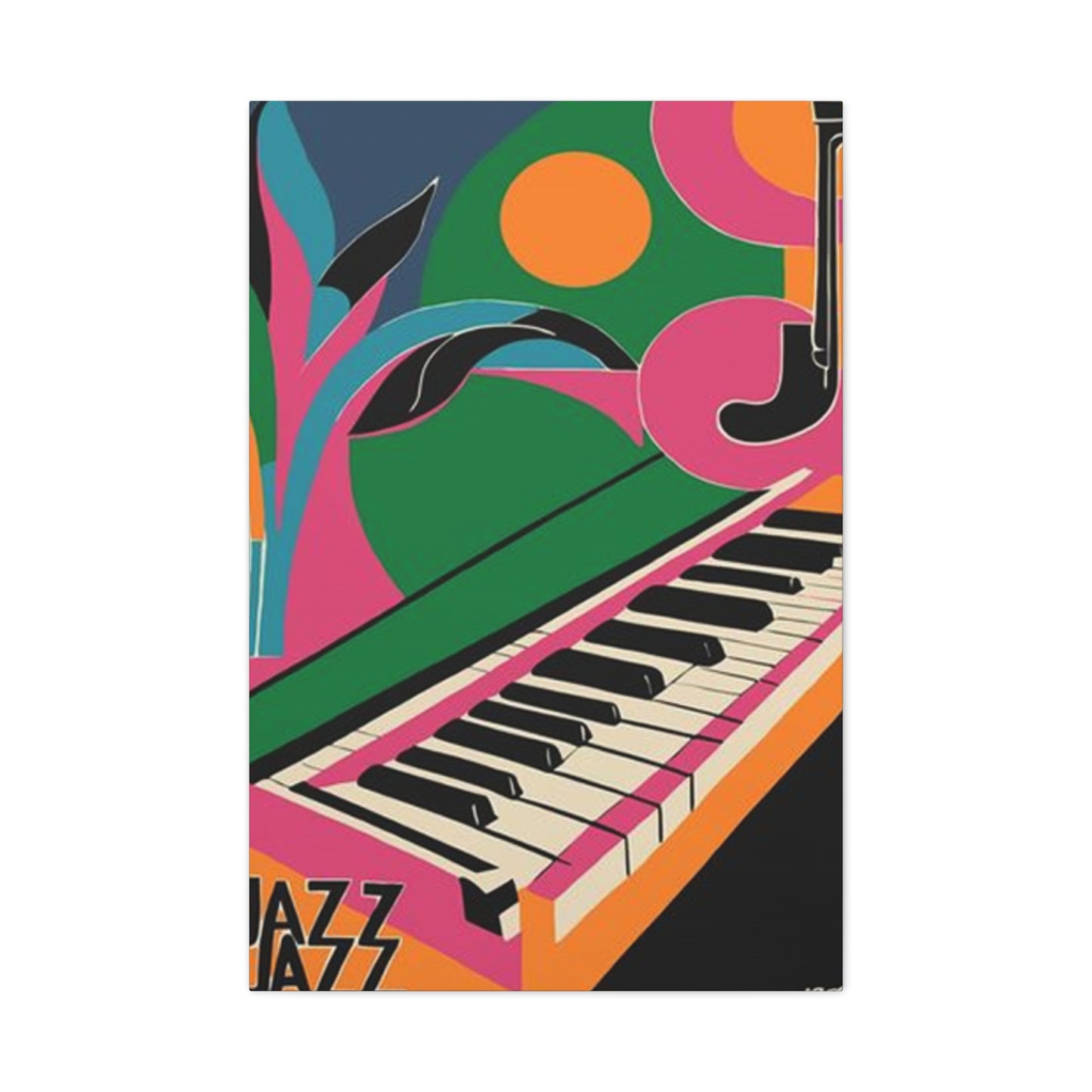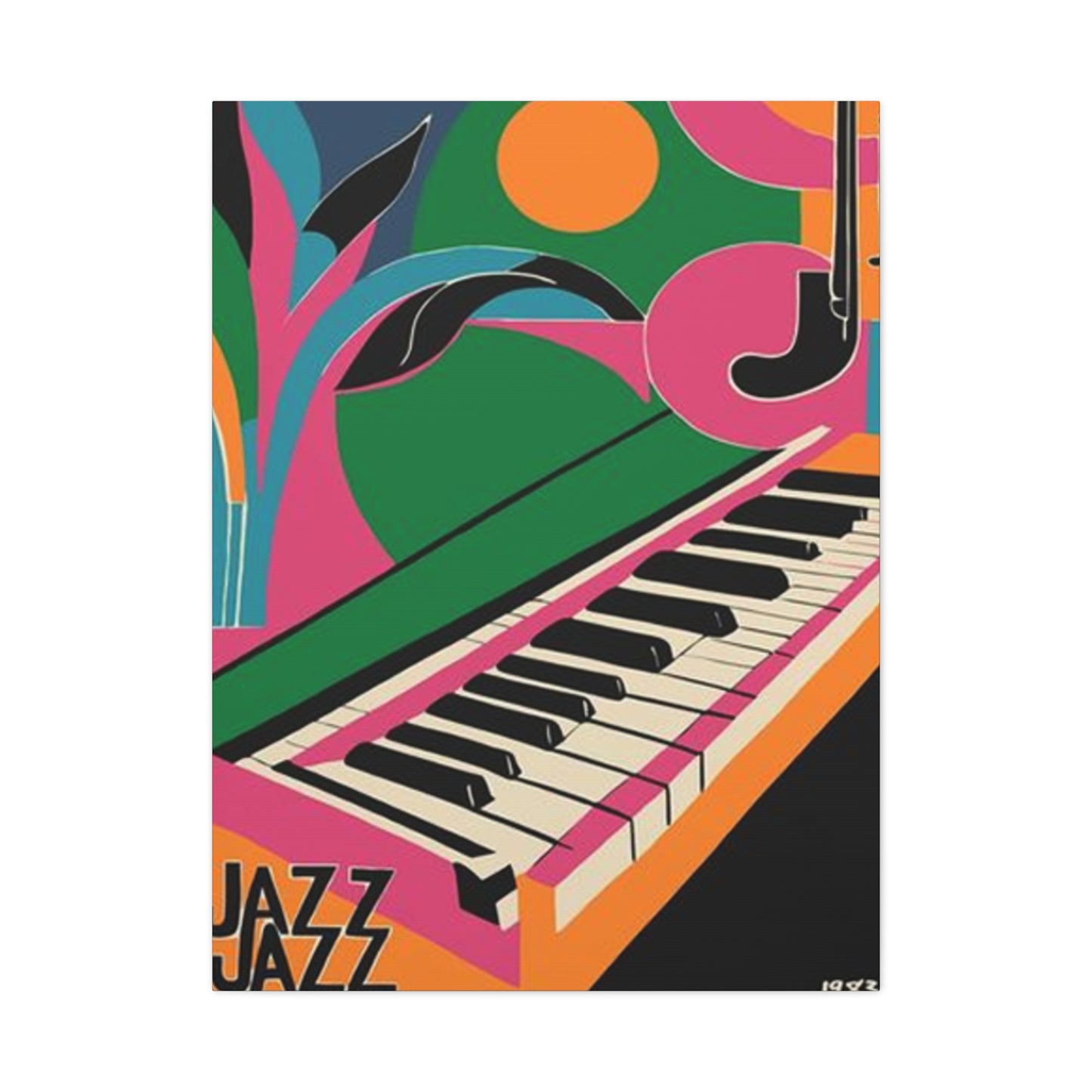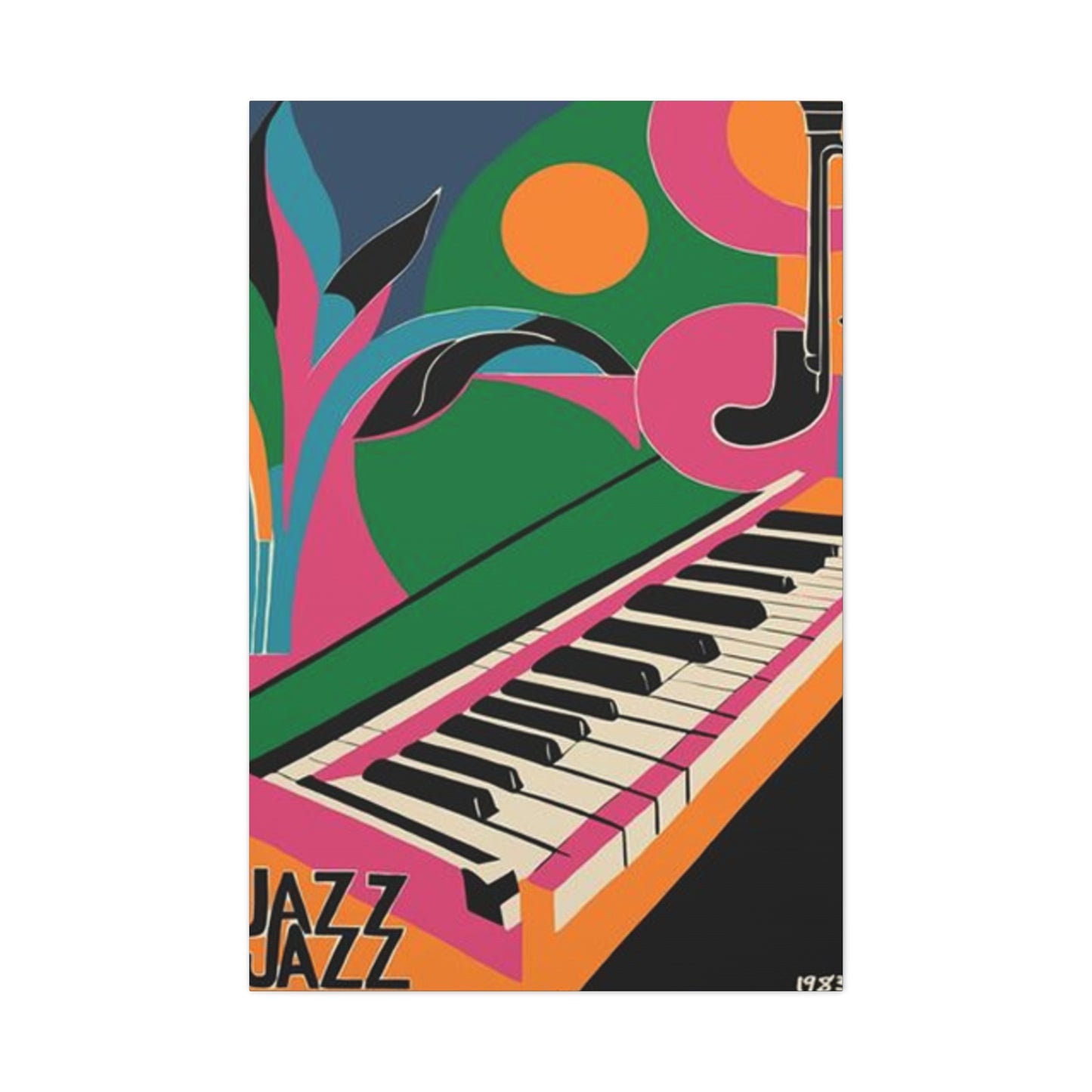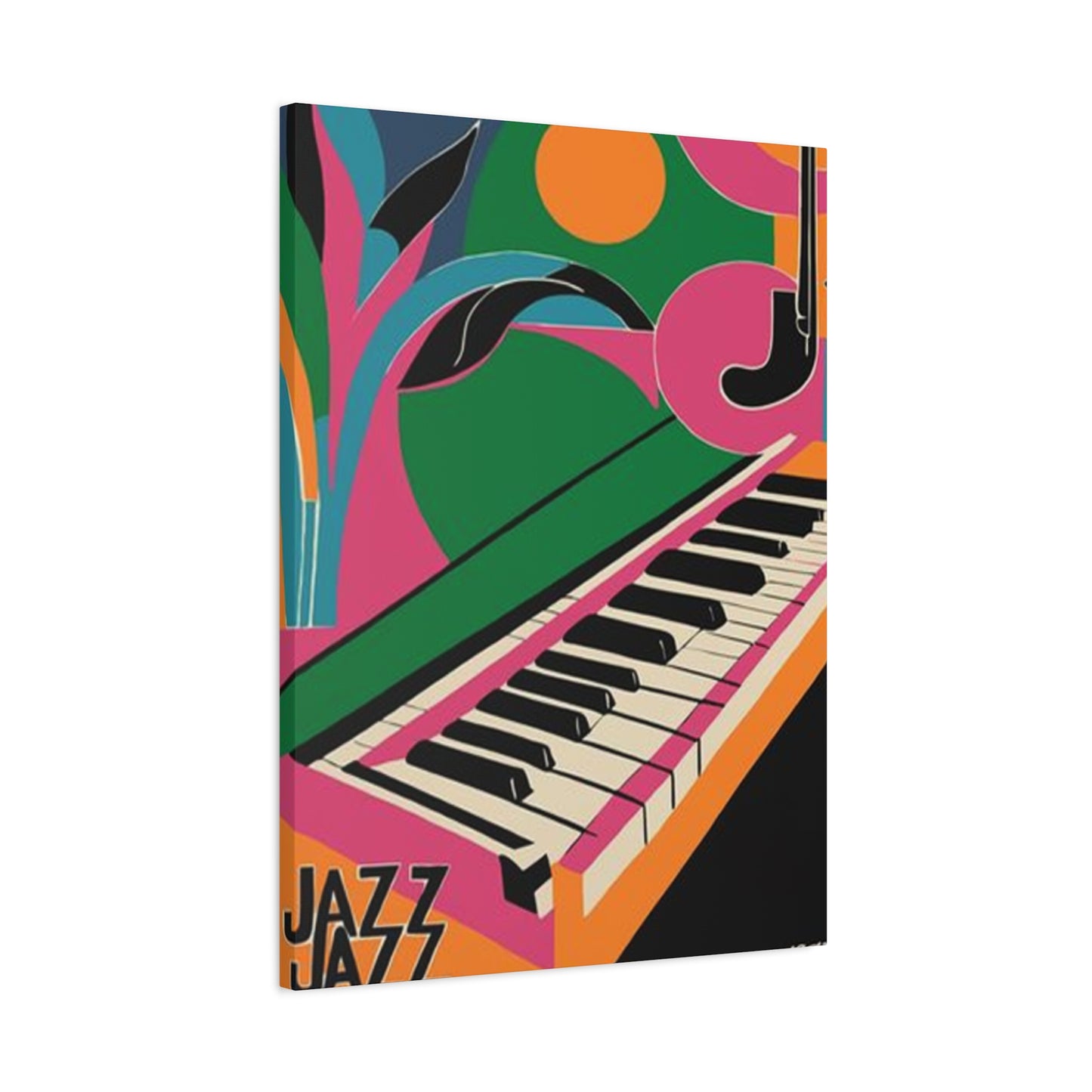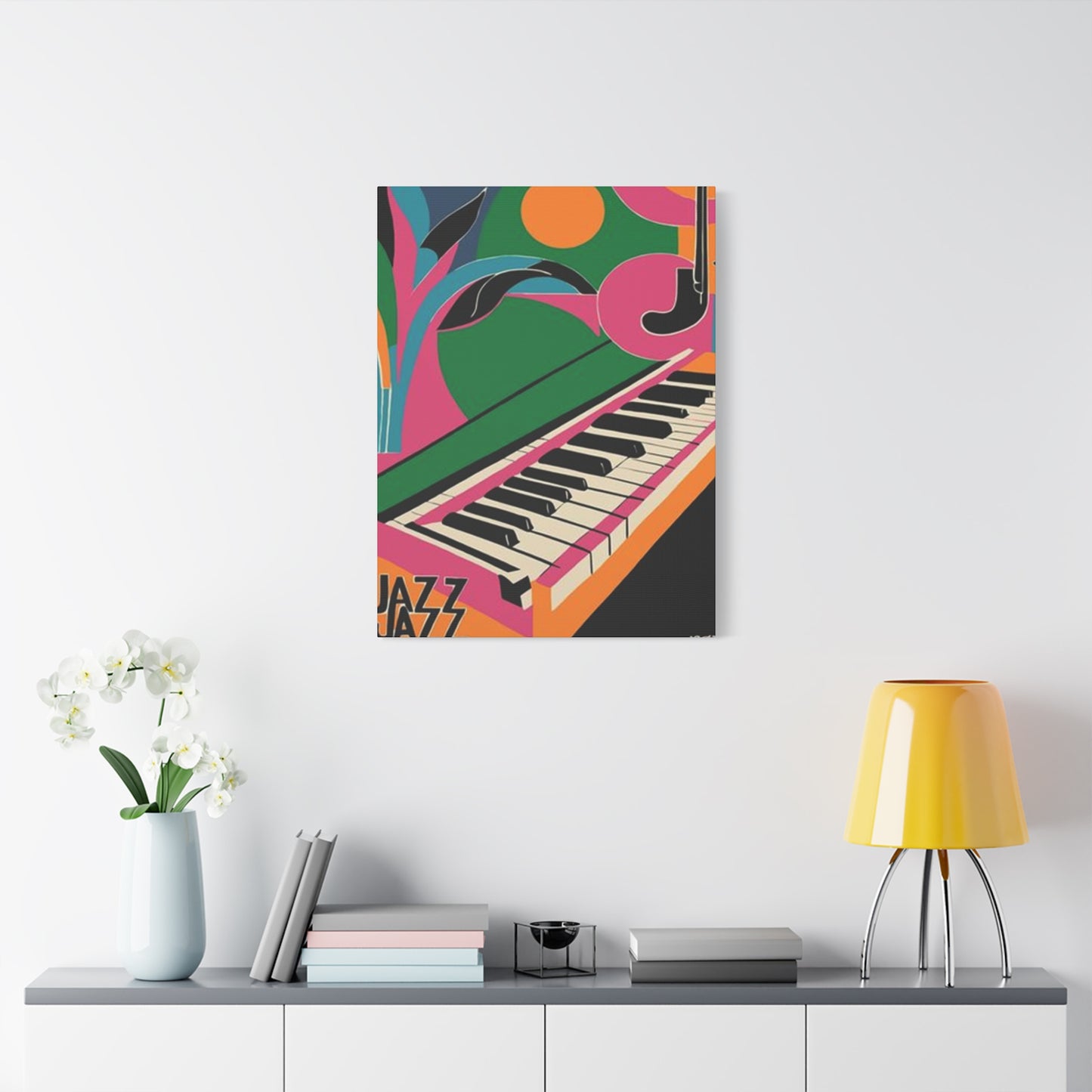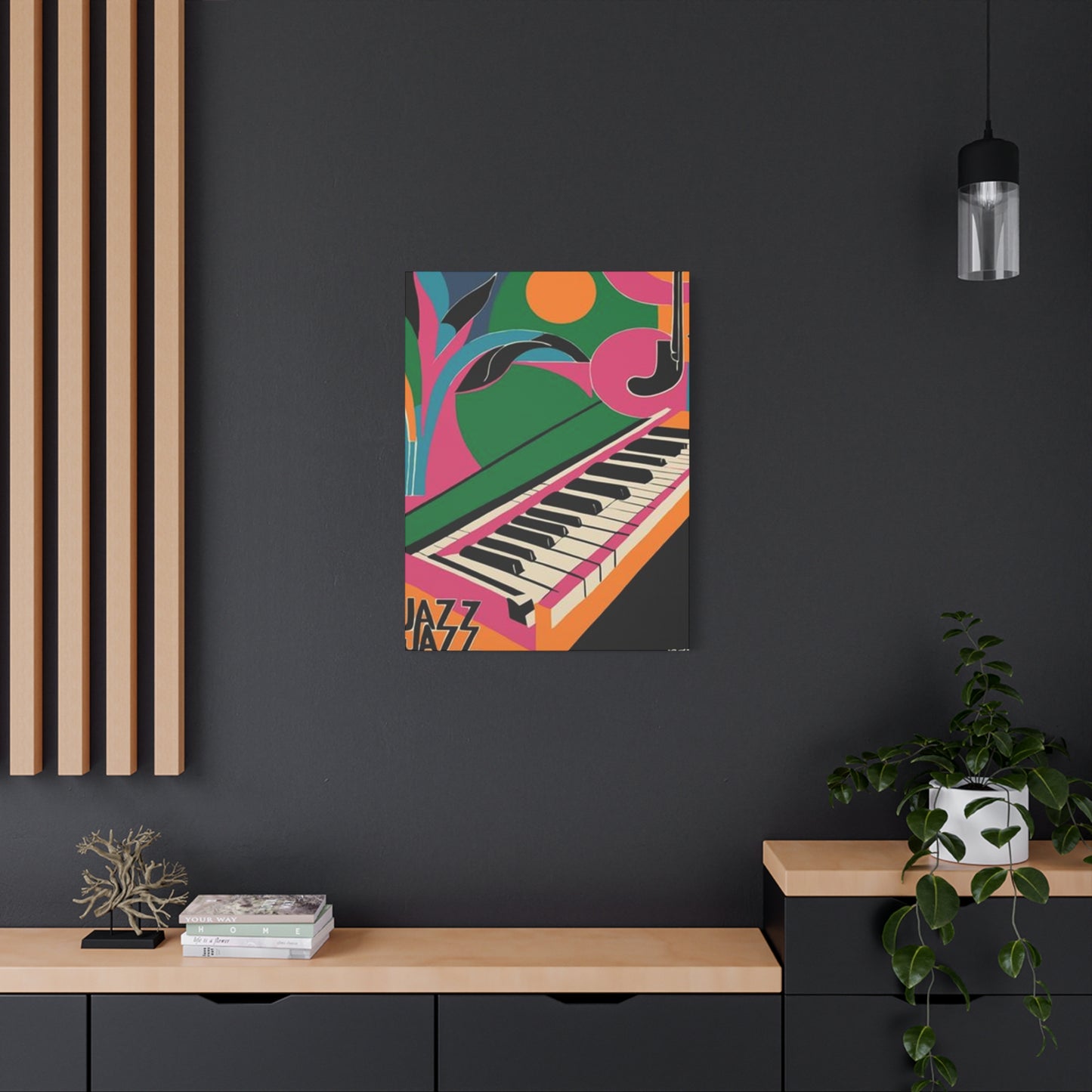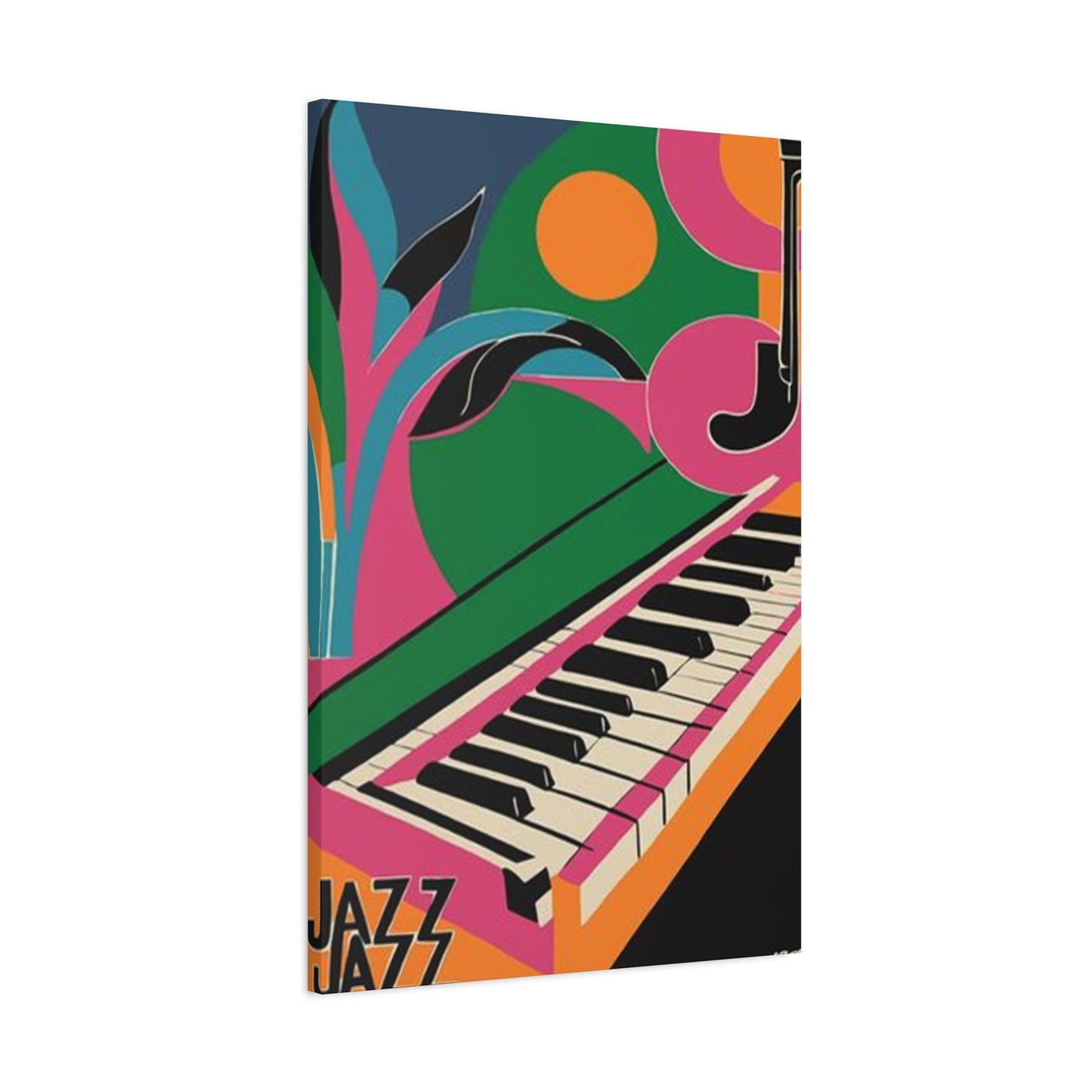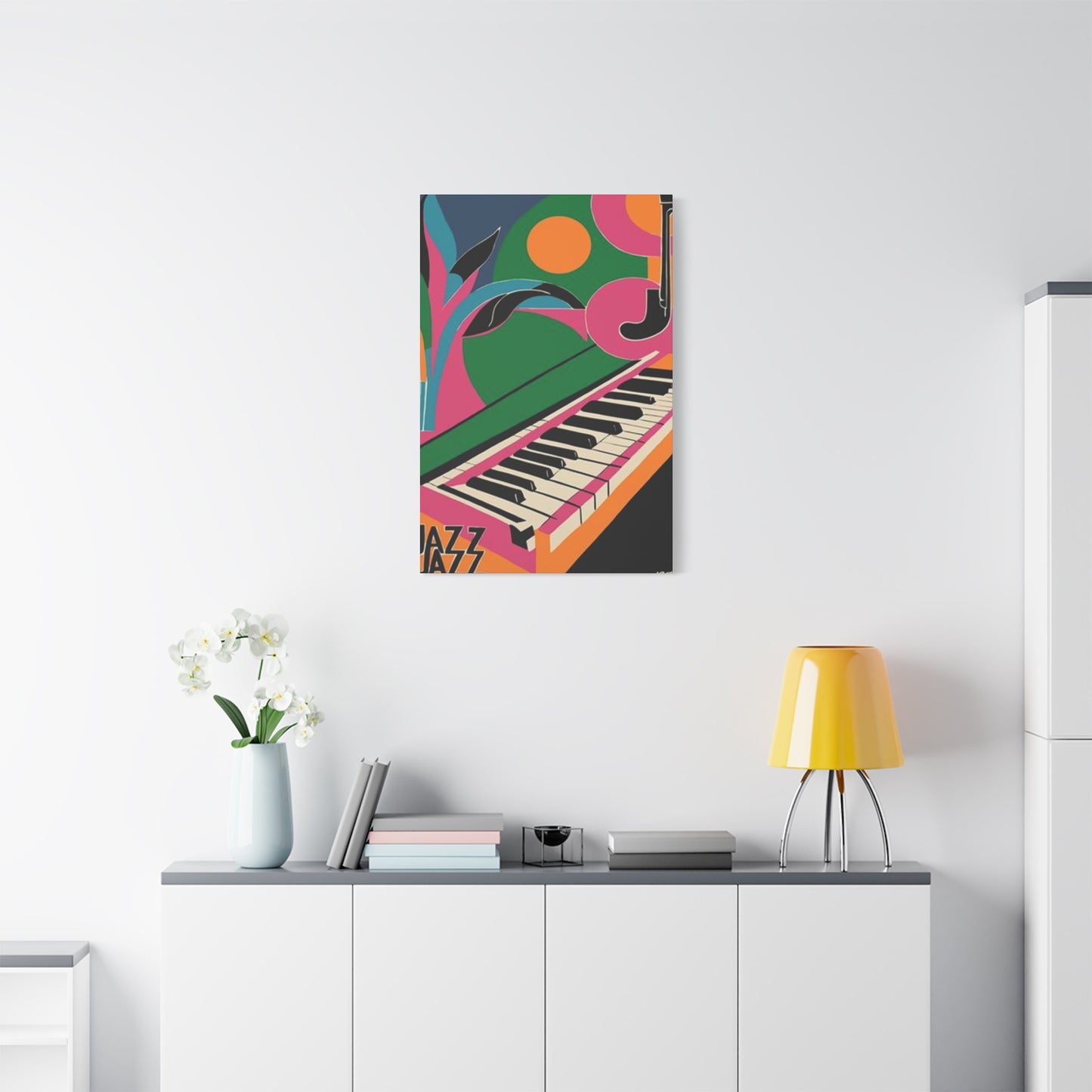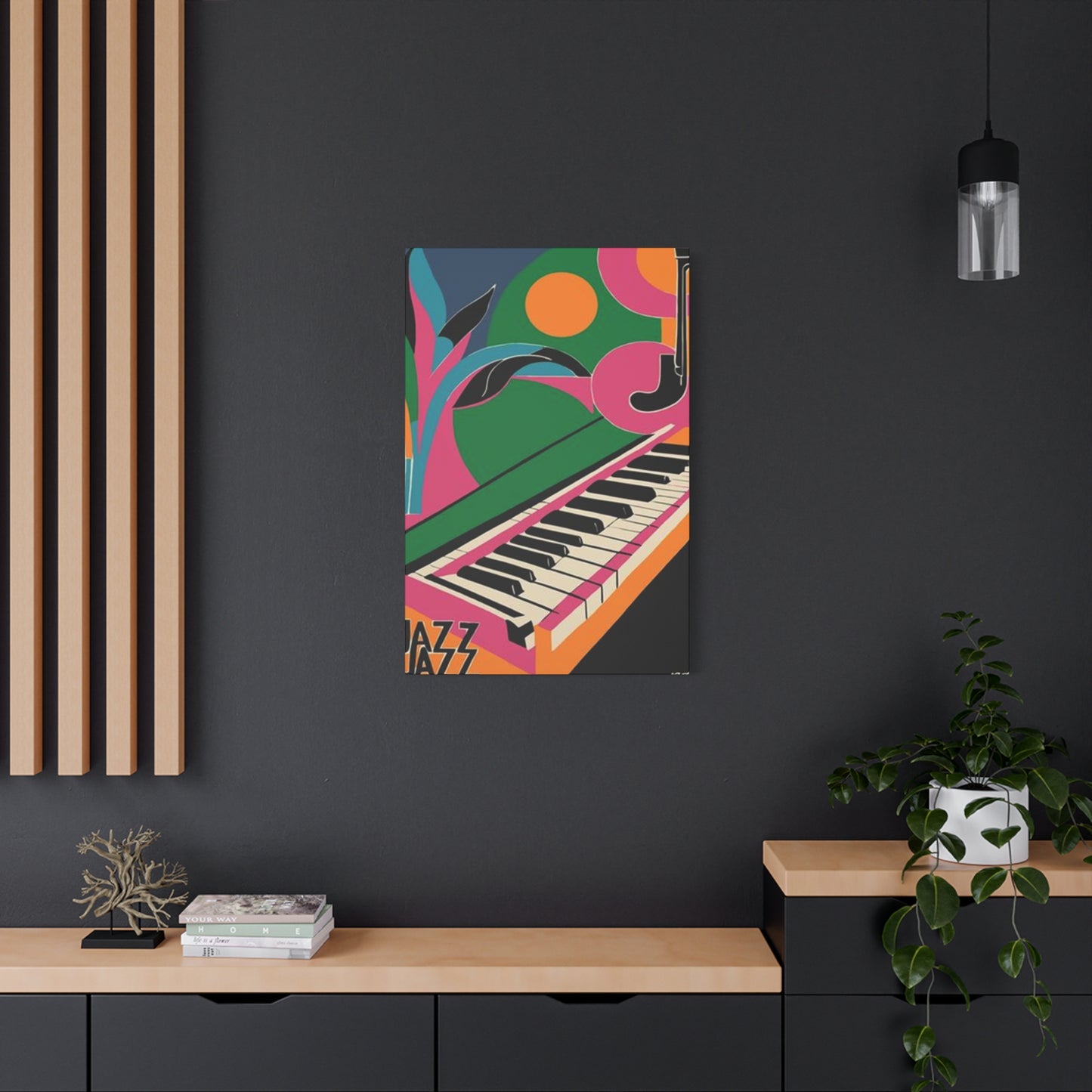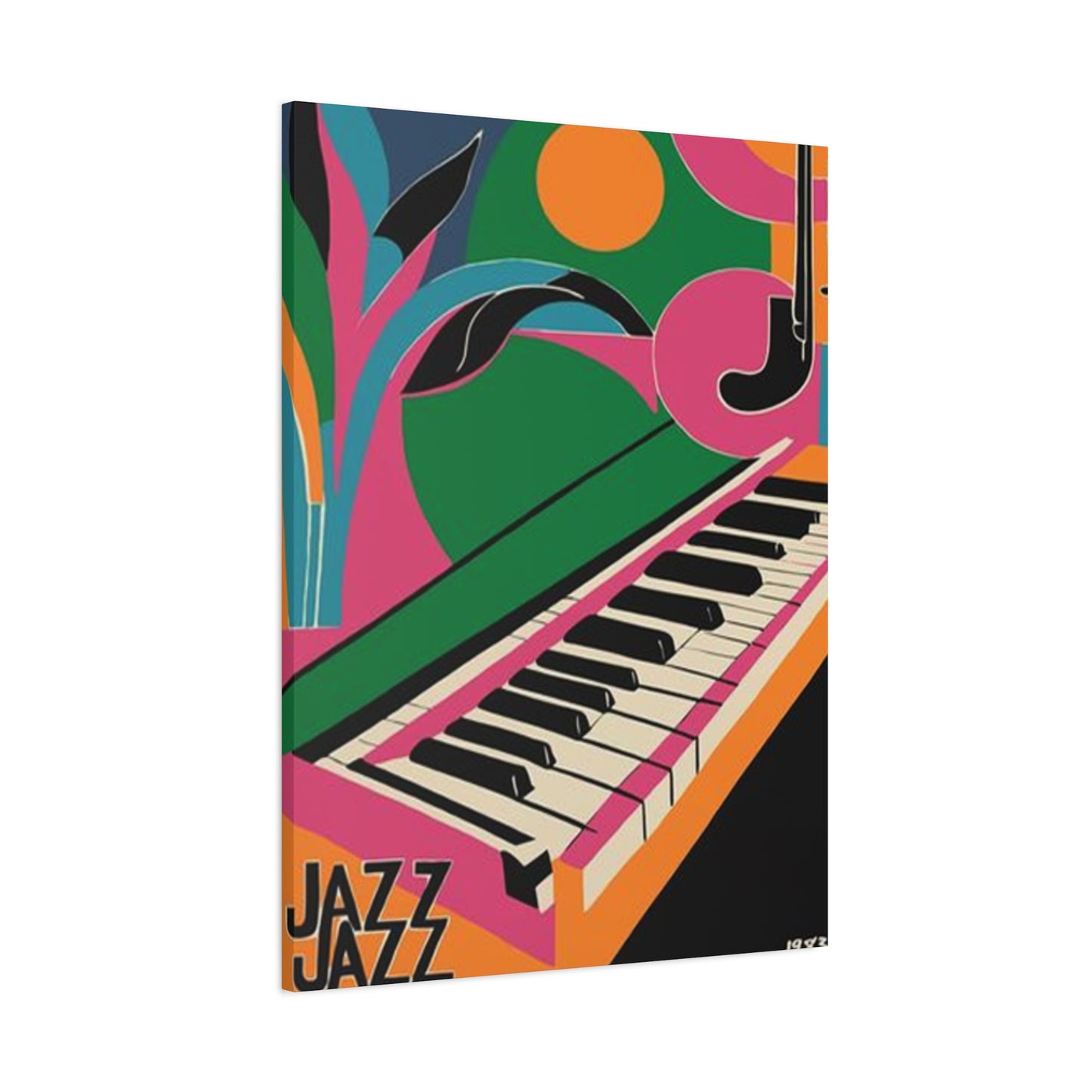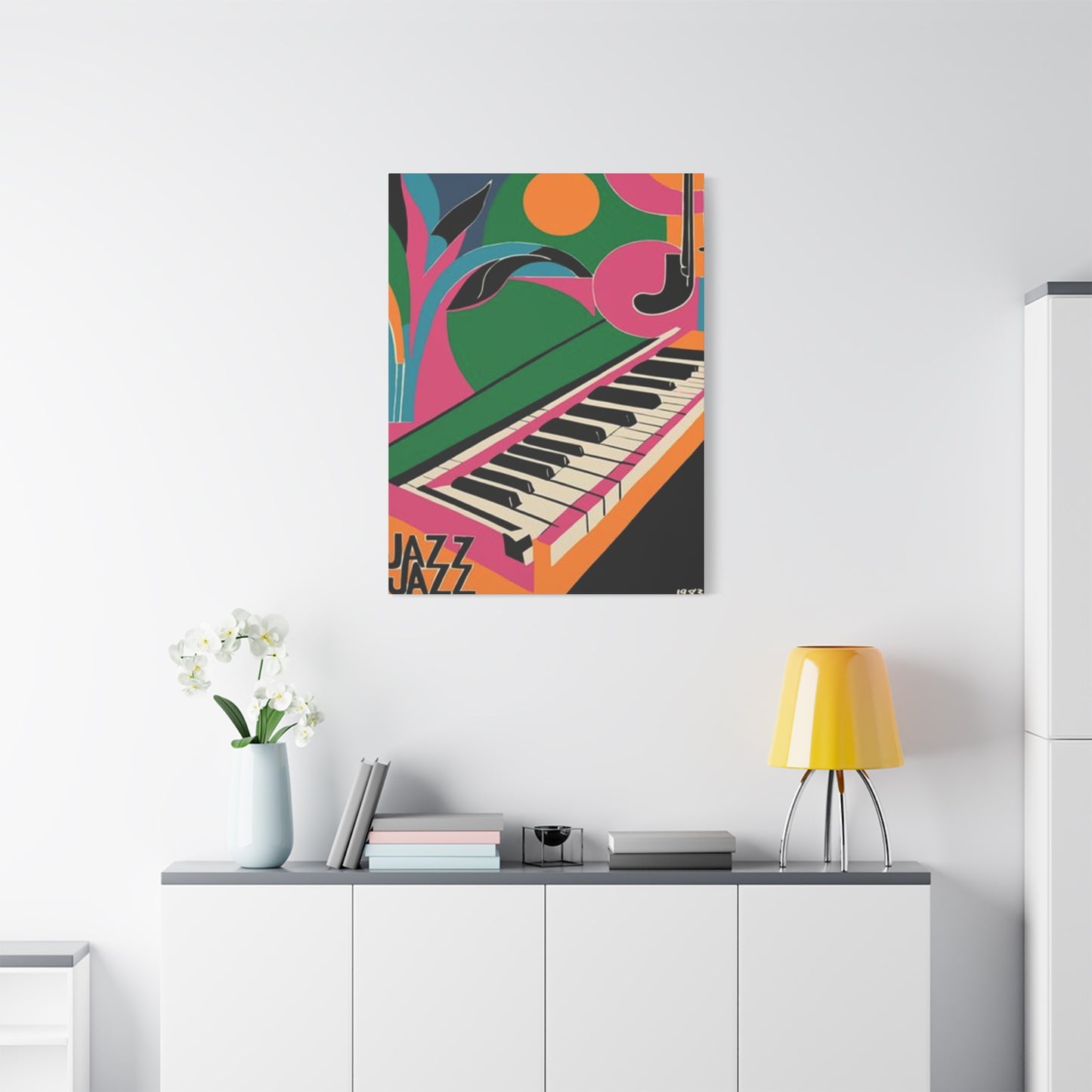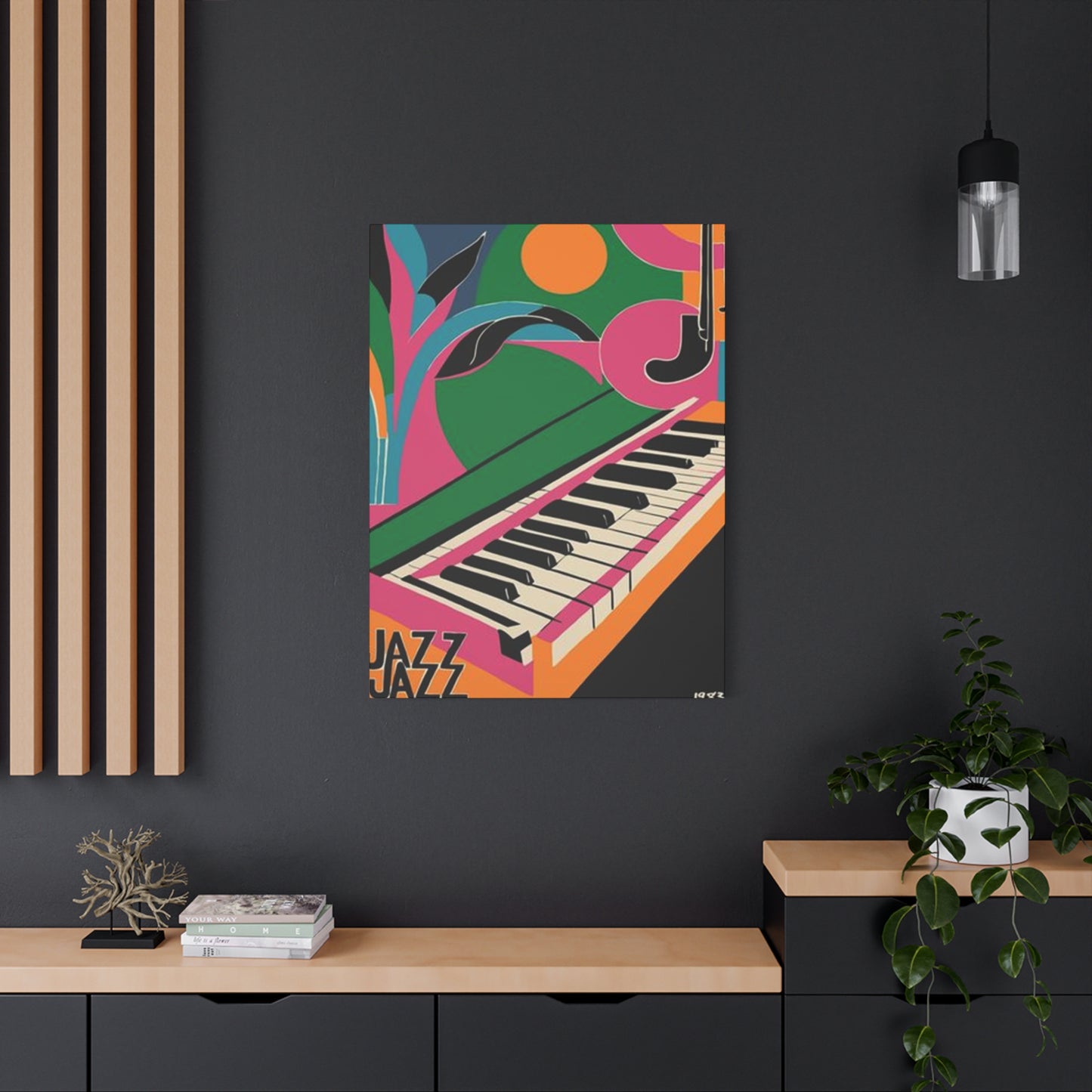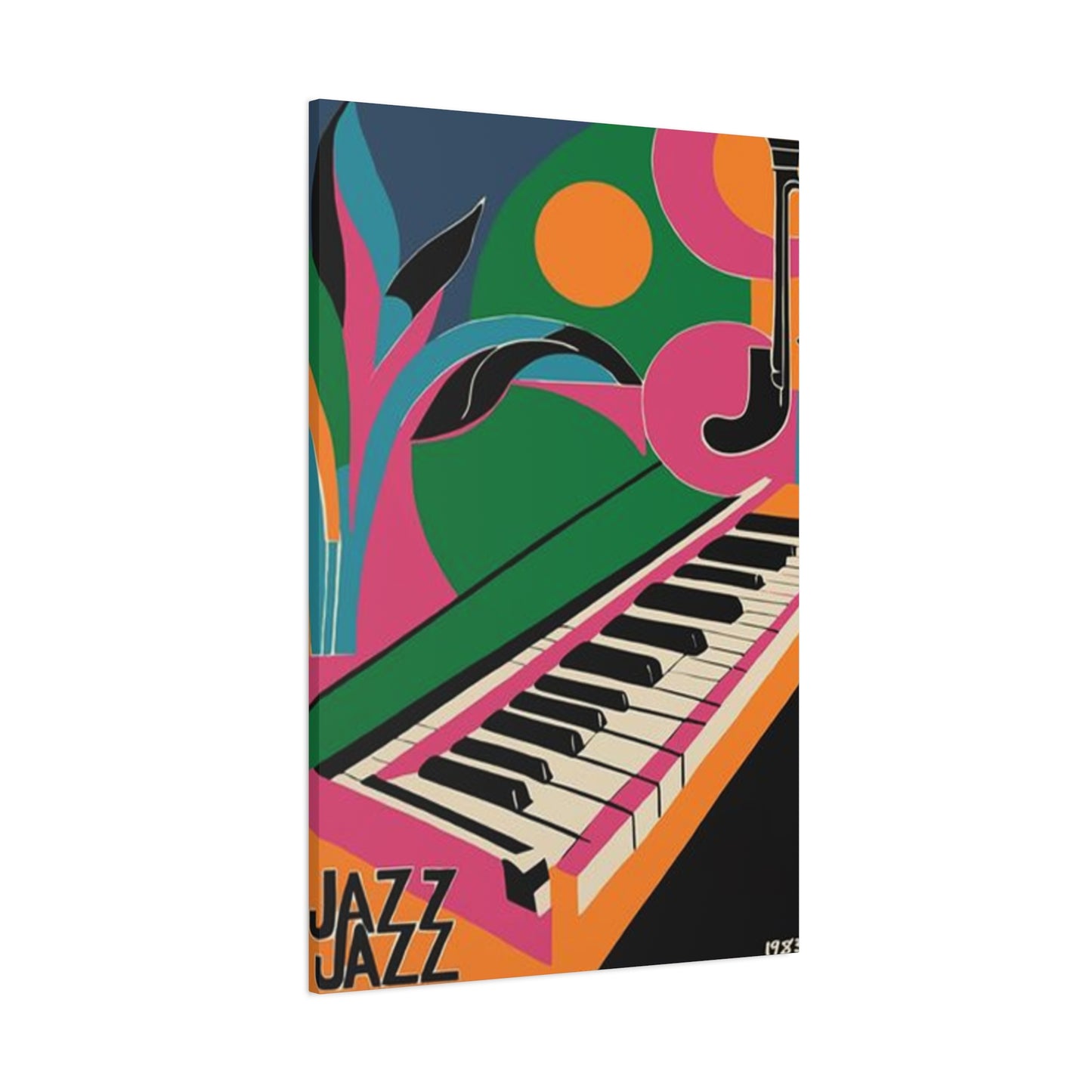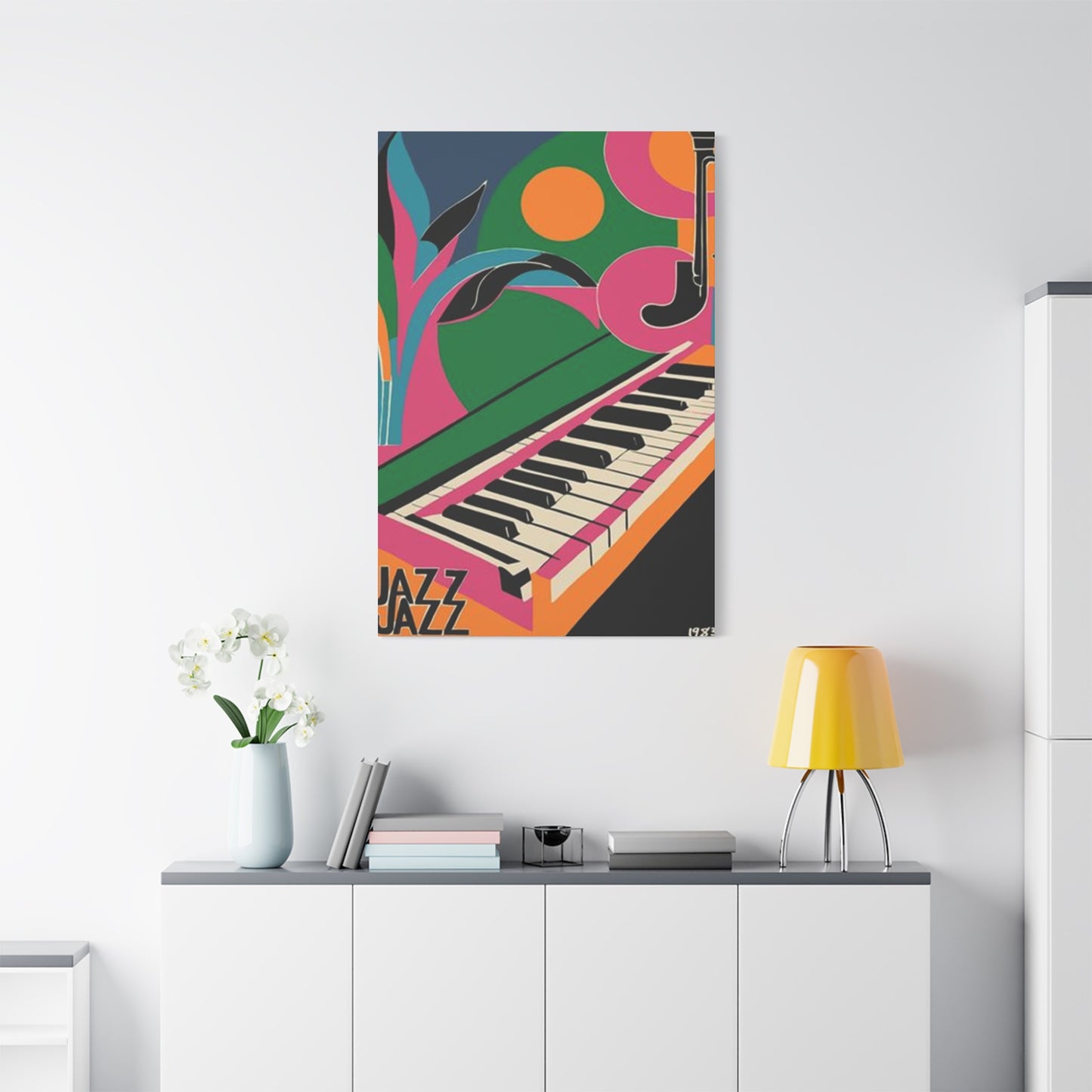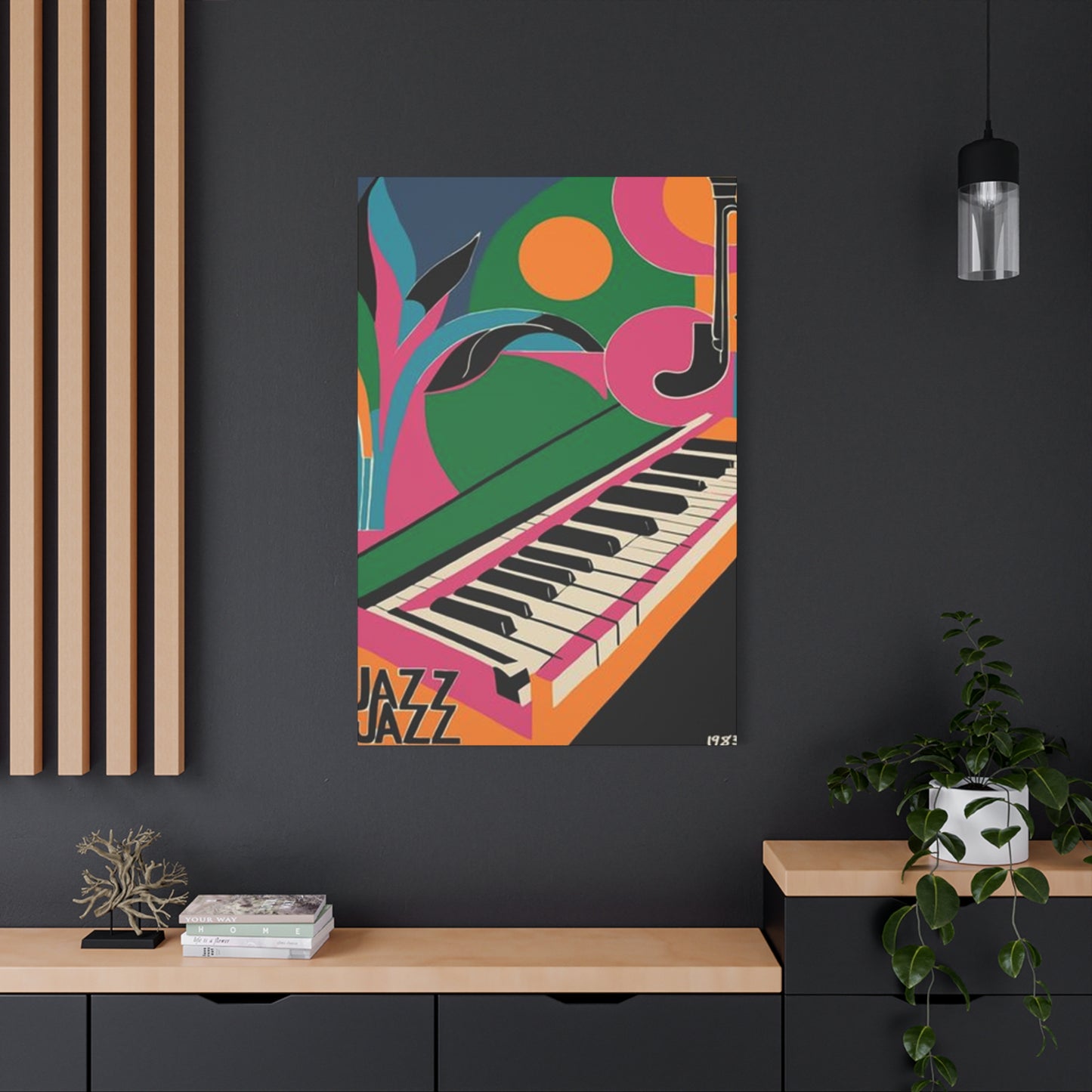Jazz Canvas Prints and Wall Art: Musical Expression Through Visual Masterpieces
Jazz music has captivated audiences for over a century with its improvisational spirit, rhythmic complexity, and emotional depth. This uniquely American art form has inspired countless artists to translate its essence into visual masterpieces, creating a vibrant world of jazz-themed canvas prints and wall art that brings the soul of music into our living environments. Whether you're a devoted jazz enthusiast, a collector of musical memorabilia, or someone who appreciates the aesthetic beauty of this genre, jazz wall art offers an exceptional way to celebrate this influential musical tradition.
The intersection of jazz music and visual art creates a powerful synergy that resonates with both music lovers and art collectors. These artistic interpretations capture the spontaneity, energy, and cultural significance of jazz, transforming musical experiences into tangible visual expressions. From abstract representations of musical improvisation to detailed portraits of legendary performers, jazz wall art encompasses a diverse range of styles, techniques, and artistic approaches that reflect the genre's rich history and continuing evolution.
The Cultural Significance of Jazz in Visual Art
Jazz emerged in the early 20th century as a revolutionary musical movement that challenged conventional artistic boundaries and social norms. This groundbreaking genre originated in the vibrant cultural melting pot of New Orleans, where African American musicians blended traditional blues, ragtime, and spirituals with European harmonic structures to create something entirely new and unprecedented. The cultural impact of jazz extended far beyond music, influencing fashion, dance, literature, and visual arts in profound and lasting ways.
Visual artists have long been drawn to jazz as a subject matter because of its inherent visual qualities. The improvisational nature of jazz mirrors the creative process of many visual artists, who work intuitively and spontaneously to create their masterpieces. The syncopated rhythms, complex harmonies, and emotional intensity of jazz translate beautifully into visual mediums, allowing artists to explore themes of movement, energy, and expression through various artistic techniques and styles.
The Harlem Renaissance of the 1920s and 1930s marked a particularly significant period in the relationship between jazz and visual art. During this cultural flowering, artists like Aaron Douglas, Palmer Hayden, and Archibald Motley Jr. created powerful works that captured the essence of jazz culture and its impact on American society. These early artistic interpretations established a foundation for the continuing tradition of jazz-inspired visual art that persists to this day.
Contemporary artists continue to find inspiration in jazz, creating works that range from realistic portraits of famous musicians to abstract interpretations of musical concepts. The versatility of jazz as an artistic subject allows for endless creative possibilities, making it a perpetually relevant and exciting theme for visual artists working in various mediums and styles.
Historical Evolution of Jazz-Themed Artwork
The visual representation of jazz has evolved significantly throughout its century-long history, reflecting changes in artistic styles, cultural attitudes, and the music itself. Early jazz artwork often focused on the social and cultural aspects of the music, depicting scenes from jazz clubs, dance halls, and street performances. These early works frequently emphasized the communal and celebratory aspects of jazz culture, showcasing the music's role in bringing people together across racial and social boundaries.
During the swing era of the 1930s and 1940s, jazz artwork began to incorporate more dynamic and energetic visual elements that reflected the music's increasing popularity and mainstream acceptance. Artists experimented with bold colors, flowing lines, and rhythmic compositions that echoed the music's emphasis on rhythm and movement. Album cover art became an important medium for jazz-related visual expression, with record labels commissioning innovative designs that helped define the visual identity of different jazz styles and artists.
The bebop revolution of the 1940s and 1950s brought new levels of complexity and intellectualism to jazz, which was reflected in the visual art of the period. Artists began creating more abstract and conceptual works that attempted to capture the music's harmonic sophistication and improvisational complexity. This period saw the emergence of artists like David Stone Martin, whose minimalist line drawings became iconic representations of modern jazz aesthetics.
The fusion and experimental jazz movements of the 1960s and beyond opened up new possibilities for visual interpretation. Artists began incorporating elements from pop art, abstract expressionism, and other contemporary art movements into their jazz-inspired works. This period saw an explosion of creativity in jazz album cover design, with artists like Reid Miles, Francis Wolff, and Andy Warhol creating visually striking covers that became as important as the music they represented.
Contemporary Jazz Wall Art Movements
Today's jazz wall art scene encompasses a remarkable diversity of styles, techniques, and artistic approaches that reflect the genre's continuing evolution and cultural relevance. Contemporary artists draw inspiration from both traditional jazz aesthetics and modern artistic movements, creating works that speak to both longtime jazz enthusiasts and new audiences discovering the music for the first time.
Digital art and mixed media have opened up new possibilities for jazz-themed artwork. Artists can now combine traditional painting techniques with digital manipulation, photography, and other modern tools to create complex, layered works that capture the multifaceted nature of jazz music. These technological advances have allowed for the creation of highly detailed and visually striking pieces that can be reproduced as high-quality canvas prints for home and office decoration.
Street art and graffiti have also become important mediums for jazz-themed expression, particularly in urban areas with strong jazz traditions. Cities like New Orleans, New York, Chicago, and Kansas City feature numerous murals and street art installations that celebrate local jazz heritage and continue to bring the music's visual representation into public spaces where it can be appreciated by diverse audiences.
The rise of online art marketplaces and print-on-demand services has democratized access to jazz wall art, making it possible for artists from around the world to share their jazz-inspired creations with a global audience. This has led to an unprecedented diversity of artistic styles and cultural perspectives in jazz-themed artwork, enriching the visual tradition of the genre with fresh voices and new interpretations.
Artistic Styles and Techniques in Jazz Canvas Prints
Jazz wall art encompasses a wide range of artistic styles and techniques, each offering unique ways to interpret and express the music's essence. Abstract expressionism remains one of the most popular approaches, with artists using bold brushstrokes, vibrant colors, and dynamic compositions to convey the energy and spontaneity of jazz performance. These abstract works often focus on capturing the emotional impact of the music rather than literal representations of musicians or instruments.
Figurative artwork continues to be an important category within jazz wall art, featuring detailed portraits of legendary performers, scenes from jazz clubs and concerts, and depictions of musical instruments. These works often combine realistic rendering techniques with stylized elements that reflect the music's artistic sophistication and cultural significance. Portrait artists working in this genre frequently emphasize the emotional expressiveness of their subjects, capturing the passion and creativity that defines great jazz performers.
Minimalist approaches have gained popularity in recent years, with artists creating clean, simple compositions that distill jazz's essence into essential visual elements. These works often feature silhouettes of musicians, simplified instrument shapes, or abstract representations of musical notes and rhythms. The minimalist aesthetic appeals to contemporary decorating sensibilities while maintaining a clear connection to jazz themes and imagery.
Mixed media techniques allow artists to incorporate various materials and textures into their jazz-themed works, creating rich, layered pieces that reflect the music's complexity and depth. These works might combine painting with collage elements, incorporating sheet music, vintage photographs, or other jazz-related materials into the composition. The mixed media approach offers unlimited creative possibilities and can result in highly unique and visually compelling pieces.
Color Palettes and Visual Themes
The color choices in jazz wall art play a crucial role in conveying the music's emotional range and cultural associations. Traditional jazz artwork often features rich, warm color palettes that reflect the music's origins in African American culture and its association with nightlife and entertainment venues. Deep blues, warm golds, rich purples, and vibrant reds are frequently used to create atmospheres that evoke smoky jazz clubs, intimate concert settings, and the passionate intensity of live performance.
Contemporary jazz artists often experiment with more diverse color schemes, incorporating bright, contrasting colors that reflect the music's evolution and its continuing relevance in modern culture. Some artists use monochromatic schemes to create sophisticated, elegant works that emphasize form and composition over color relationships. Others embrace bold, pop art-inspired palettes that give jazz imagery a fresh, contemporary feeling while maintaining its essential character.
The use of metallic accents and textures has become increasingly popular in jazz wall art, with artists incorporating gold, silver, and copper elements that reflect light and add visual interest to their compositions. These metallic elements often represent the gleaming surfaces of brass instruments or the glamorous atmosphere of jazz's golden age, adding layers of meaning and visual richness to the artwork.
Visual themes in jazz wall art often center around movement and rhythm, with artists using flowing lines, dynamic compositions, and gestural brushwork to suggest the music's kinetic energy. Musical instruments, particularly saxophones, trumpets, and pianos, serve as recurring motifs that immediately identify the artwork's jazz connections while offering opportunities for creative interpretation and stylization.
Iconic Jazz Musicians in Canvas Art
The pantheon of jazz legends provides an inexhaustible source of inspiration for visual artists, with many of the genre's most celebrated performers becoming frequent subjects for canvas prints and wall art. Louis Armstrong, often considered the father of modern jazz, appears in countless artistic interpretations that celebrate his groundbreaking contributions to the music and his charismatic personality. Artists frequently capture Armstrong's infectious smile, his powerful trumpet playing, and his dynamic stage presence in works that range from realistic portraits to abstract interpretations.
Duke Ellington, the sophisticated composer and bandleader, is another favorite subject for jazz artists. His elegant bearing, creative genius, and long career provide rich material for artistic interpretation. Many works featuring Ellington emphasize his role as both performer and composer, often incorporating musical notation or piano imagery into the overall composition to reflect his multifaceted talents and contributions to the genre.
Miles Davis, the innovative trumpeter who constantly pushed jazz in new directions throughout his career, offers artists opportunities to explore themes of innovation, rebellion, and artistic evolution. Davis's cool, introspective persona and his association with various jazz movements make him a particularly compelling subject for contemporary artists who want to explore jazz's continuing evolution and cultural relevance.
Female jazz pioneers like Billie Holiday, Ella Fitzgerald, and Sarah Vaughan are increasingly represented in jazz wall art, reflecting growing recognition of their crucial contributions to the genre. These works often emphasize the emotional depth and technical mastery of these great performers while addressing themes of perseverance and artistic excellence in the face of social and professional challenges.
Vintage and Retro Jazz Poster Aesthetics
Vintage-inspired jazz wall art draws heavily from the visual aesthetics of mid-20th century advertising, concert promotion, and album cover design. This style often features typography, color schemes, and compositional approaches that evoke the golden age of jazz, creating works that feel both nostalgic and timelessly elegant. The vintage aesthetic appeals to collectors and decorators who appreciate the sophisticated design sensibilities of earlier eras while enjoying the music's continuing relevance.
Retro jazz posters often incorporate design elements from the Art Deco movement, which was contemporary with jazz's early development and shares many of its cultural associations. Art Deco's emphasis on geometric forms, luxurious materials, and sophisticated glamour translates beautifully into jazz-themed artwork, creating pieces that capture both the music's energy and its association with urban sophistication and cultural sophistication.
Typography plays a crucial role in vintage-inspired jazz wall art, with artists often incorporating period-appropriate fonts and lettering styles into their compositions. These typographic elements might include the names of famous musicians, song titles, or jazz-related phrases that add textual interest while reinforcing the work's musical connections. The careful selection and integration of typography can significantly enhance the authentic vintage feel of these pieces.
Color palettes in vintage-inspired jazz art typically feature muted, sophisticated tones that reflect the printing technologies and design preferences of earlier eras. Sepia tones, faded colors, and deliberately weathered effects create an authentic vintage atmosphere while ensuring that the artwork integrates well with contemporary decorating schemes. These color choices help create a sense of historical continuity that connects contemporary viewers with jazz's rich heritage.
Modern Interpretations of Classic Jazz Imagery
Contemporary artists working with jazz themes often reinterpret classic imagery and motifs through modern artistic lenses, creating works that honor the genre's traditions while speaking to current audiences. These modern interpretations might involve updating traditional jazz club scenes with contemporary settings, reimagining famous musicians in new contexts, or applying contemporary artistic techniques to classic jazz imagery.
Digital art technologies have opened up new possibilities for reinterpreting jazz imagery, allowing artists to create highly detailed, photo-realistic works or to experiment with surreal and fantastical approaches that would be difficult or impossible to achieve with traditional media. These digital techniques can be used to create stunning canvas prints that maintain the richness and depth of traditional paintings while incorporating uniquely modern visual elements.
Pop art influences appear frequently in modern jazz wall art, with artists borrowing techniques like bold colors, repeated imagery, and graphic simplification from this influential movement. These pop art approaches can make jazz imagery more accessible to contemporary audiences while maintaining its essential character and cultural significance. The combination of jazz themes with pop art aesthetics often results in visually striking pieces that work well in modern decorating schemes.
Street art and graffiti techniques have also influenced modern jazz wall art, with artists incorporating urban aesthetic elements like stenciling, spray paint effects, and layered imagery into their works. These influences reflect jazz's continuing relevance in urban culture and its connection to other contemporary art forms that have emerged from similar cultural contexts.
Canvas Print Technology and Quality Considerations
The quality of canvas prints plays a crucial role in the final appearance and longevity of jazz wall art. Modern printing technologies have advanced significantly, allowing for the reproduction of artwork with exceptional color accuracy, detail resolution, and archival stability. High-quality canvas prints use pigment-based inks that resist fading and color shifting over time, ensuring that the artwork maintains its visual impact for many years.
Canvas material selection affects both the appearance and durability of the final product. Premium canvas materials typically feature tight weaves and smooth surfaces that allow for crisp detail reproduction and even ink absorption. The canvas texture can significantly impact the final appearance of the artwork, with some materials providing subtle texture that enhances the handmade quality of the original work while others offer smooth surfaces that emphasize fine detail and color accuracy.
Stretching and mounting techniques are crucial for achieving professional results with canvas prints. Proper stretching ensures that the canvas remains taut and flat over time, preventing sagging or warping that can detract from the artwork's appearance. Gallery wrap mounting, where the image extends around the edges of the stretcher frame, creates a finished appearance that eliminates the need for additional framing while providing a contemporary, professional look.
Color calibration and profile management are technical considerations that significantly impact the final quality of canvas prints. Professional printing services use carefully calibrated equipment and color management systems to ensure that the printed colors match the artist's original intentions as closely as possible. This attention to technical detail is particularly important for jazz artwork, where subtle color relationships and atmospheric effects play crucial roles in the overall impact of the piece.
Decorating with Jazz Wall Art in Different Environments
Jazz wall art can enhance a wide variety of living and working environments, from intimate residential settings to commercial and public locations. In home environments, jazz artwork works particularly well in areas associated with relaxation, entertainment, and cultural appreciation. Living rooms, home bars, music rooms, and studies are natural locations for jazz-themed pieces, where they can contribute to atmospheres of sophistication and cultural refinement.
Bedroom applications of jazz wall art often focus on creating calming, sophisticated atmospheres that promote relaxation while expressing personal taste and cultural interests. Softer, more contemplative jazz imagery works particularly well in these settings, where bold, energetic pieces might be too stimulating for restful environments. Monochromatic or limited color palette works often integrate well with bedroom decorating schemes while maintaining their artistic impact.
Commercial applications of jazz wall art include restaurants, bars, hotels, and office environments where the music's associations with sophistication, creativity, and cultural refinement can enhance the desired atmosphere. Jazz-themed artwork in commercial settings often needs to work with diverse decorating schemes and lighting conditions while maintaining broad appeal to varied audiences.
Office and workspace applications of jazz wall art can help create inspiring, culturally rich environments that promote creativity and cultural awareness. Jazz's associations with improvisation, collaboration, and artistic excellence make it particularly appropriate for creative industries and professional environments where innovation and cultural sophistication are valued.
Gift Ideas and Collector Appeal
Jazz wall art makes exceptional gifts for music lovers, art collectors, and anyone who appreciates American cultural heritage. The personal nature of musical taste means that jazz artwork can serve as thoughtful, meaningful gifts that demonstrate understanding of the recipient's interests and cultural preferences. The wide range of available styles and price points makes it possible to find appropriate pieces for various gift-giving occasions and budgets.
Collector appeal in jazz wall art often centers around limited edition prints, works by recognized artists, or pieces that feature particularly significant musicians or historical moments. Some collectors focus on acquiring comprehensive collections that represent different eras, styles, or artists within the jazz tradition, while others concentrate on specific musicians or artistic approaches that particularly appeal to their taste and interests.
Authenticity and provenance considerations are important factors for serious collectors, who often seek works with clear documentation of their origins and production details. Limited edition prints with certificates of authenticity, works by established artists, or pieces with historical significance tend to maintain or increase their value over time, making them attractive both as decorative pieces and as investments.
The gift potential of jazz wall art extends beyond the immediate recipient to include its ability to spark conversations, share cultural knowledge, and introduce others to the rich tradition of jazz music and its visual representation. A well-chosen piece of jazz artwork can serve as a gateway to deeper appreciation of both the music and the visual arts, making it a gift that continues to provide value long after the initial presentation.
Customization and Personalization Options
Many providers of jazz wall art offer customization and personalization services that allow customers to create unique pieces tailored to their specific preferences and requirements. These services might include custom sizing to fit particular wall dimensions, color adjustments to complement existing decorating schemes, or the addition of personal text or dedications that make the piece uniquely meaningful to the owner.
Custom portrait services allow music lovers to commission original artwork featuring their favorite musicians or even themselves in jazz-themed settings. These personalized pieces can capture specific performances, favorite songs, or meaningful musical moments, creating one-of-a-kind artworks that have deep personal significance and cannot be found anywhere else.
Text customization options allow customers to add song titles, favorite lyrics, personal dedications, or meaningful dates to jazz artwork, creating pieces that commemorate specific events or relationships. These textual additions can be seamlessly integrated into the overall design, enhancing the personal significance of the piece without detracting from its artistic quality.
Size and format customization ensures that jazz wall art can fit perfectly into any decorating scheme or architectural setting. Whether customers need large statement pieces for prominent wall locations or smaller works for intimate settings, customization services can adapt artwork to meet specific dimensional requirements while maintaining proper proportions and visual impact.
Color Coordination and Room Design
Successful integration of jazz wall art into room design requires careful consideration of color relationships, scale proportions, and stylistic harmony. Jazz artwork's typically rich, warm color palettes work particularly well with decorating schemes that emphasize comfort, sophistication, and cultural richness. Understanding how to coordinate these colors with existing furnishings and architectural elements ensures that the artwork enhances rather than conflicts with the overall design scheme.
Neutral backgrounds often provide excellent foundations for jazz wall art, allowing the artwork's colors and imagery to take center stage without competing with busy or highly colored surroundings. Warm gray, cream, and soft white backgrounds can enhance jazz artwork's natural warmth while providing visual rest areas that prevent the overall design from becoming overwhelming or chaotic.
Accent lighting plays a crucial role in displaying jazz wall art effectively, with proper illumination enhancing color saturation, revealing fine details, and creating dramatic visual impact. Track lighting, picture lights, or strategically placed accent lamps can transform jazz artwork into focal points that draw attention and create visual interest throughout the room.
Scale and proportion considerations ensure that jazz wall art integrates harmoniously with room dimensions and furniture arrangements. Large statement pieces work well in spacious rooms with high ceilings, while smaller works or groupings of related pieces can be more appropriate for intimate settings or areas with limited wall area. Understanding these relationships helps create balanced, visually pleasing arrangements that showcase the artwork effectively.
Investment Value and Market Trends
The market for jazz wall art has shown steady growth and increasing sophistication as collectors and decorators recognize the genre's enduring cultural significance and artistic value. Works by established artists, limited edition prints, and pieces with historical significance tend to maintain or appreciate in value over time, making them attractive both as decorative pieces and as long-term investments.
Market trends in jazz wall art reflect broader patterns in both the art world and popular culture, with contemporary interpretations and digital techniques gaining popularity alongside traditional approaches. The increasing accessibility of high-quality reproduction techniques has democratized the market while creating new opportunities for artists to reach larger audiences with their work.
Authentication and documentation play increasingly important roles in the jazz wall art market, with collectors and investors seeking pieces with clear provenance and professional certification. This trend reflects the growing maturity of the market and the increasing recognition of jazz-themed artwork as a legitimate and valuable collecting category.
The international appeal of jazz music has created global markets for jazz wall art, with collectors and enthusiasts around the world seeking pieces that celebrate their appreciation for American cultural heritage. This international demand has helped support diverse artistic voices and has contributed to the continued evolution and expansion of jazz-themed visual art.
Care and Maintenance of Canvas Prints
Proper care and maintenance of jazz canvas prints ensures their longevity and continued visual impact over many years. Understanding basic conservation principles and implementing appropriate care routines can prevent common forms of deterioration and preserve the artwork's original appearance and value. Regular maintenance is particularly important for investment pieces or works with sentimental significance that owners want to preserve for future generations.
Environmental factors play crucial roles in canvas print preservation, with temperature, humidity, and light exposure all affecting the artwork's stability and appearance over time. Maintaining stable environmental conditions and protecting artwork from direct sunlight, extreme temperatures, and high humidity levels can significantly extend the life of canvas prints while preserving their color accuracy and structural integrity.
Cleaning techniques for canvas prints require careful attention to avoid damage while removing accumulated dust and surface contamination. Gentle dusting with soft brushes or lint-free cloths can remove surface debris without damaging the canvas or ink layers. More extensive cleaning should generally be performed by professional conservators who have the expertise and equipment to safely address more serious cleaning challenges.
Storage considerations become important when canvas prints need to be temporarily removed from display or when building collections that exceed immediate display capacity. Proper storage techniques involve protecting artwork from physical damage, environmental fluctuations, and pest contamination while maintaining accessibility for periodic inspection and enjoyment.
Educational Value and Cultural Appreciation
Jazz wall art serves important educational functions by introducing viewers to the rich history and cultural significance of jazz music while providing opportunities for deeper cultural appreciation and understanding. These visual representations can spark curiosity about the music itself, leading viewers to explore jazz recordings, attend live performances, or learn about the historical and social contexts that shaped the genre's development.
Historical education through jazz artwork can provide insights into American cultural history, civil rights movements, and the evolution of popular entertainment throughout the 20th and 21st centuries. Many pieces incorporate historical references, period details, or cultural symbols that offer opportunities for learning about broader social and political contexts that influenced jazz's development and continuing significance.
Musical education benefits can arise from exposure to jazz imagery, particularly for viewers who might not otherwise encounter jazz music in their daily lives. Visual representations of instruments, performance settings, and musical notation can provide entry points for understanding musical concepts and appreciating the technical sophistication of jazz performance and composition.
Cultural appreciation fostered by jazz wall art extends beyond music to include broader understanding of American artistic heritage, urban culture, and the contributions of African American artists to world culture. These educational aspects make jazz artwork particularly valuable in educational settings, cultural institutions, and public locations where diverse audiences can encounter and learn from the displayed works.
Seasonal and Themed Displays
Jazz wall art lends itself well to seasonal and themed display arrangements that can keep decorating schemes fresh and interesting throughout the year. The music's association with various seasons, holidays, and cultural celebrations provides opportunities for creating dynamic displays that reflect changing moods and occasions while maintaining continuity through the common jazz theme.
Holiday applications of jazz wall art can celebrate the genre's rich tradition of holiday music and winter jazz festivals. Many jazz artists have recorded memorable holiday albums, and artwork featuring winter scenes, holiday imagery, or seasonal color palettes can create appropriate displays for December and January decorating while maintaining the sophisticated aesthetic that jazz artwork provides.
Summer displays might emphasize jazz's association with outdoor festivals, warm weather performances, and the vibrant energy of summer jazz events. Brighter color palettes, outdoor performance imagery, and festival-themed artwork can create seasonal displays that celebrate jazz's role in summer entertainment and cultural celebration.
Themed groupings allow collectors and decorators to create focused displays that explore particular aspects of jazz history, specific musicians, or artistic styles. These thematic approaches can provide opportunities for deeper exploration of jazz culture while creating visually coherent displays that have greater impact than randomly arranged individual pieces.
Online Shopping and Selection Criteria
The proliferation of online marketplaces has made jazz wall art more accessible than ever before, but it has also created challenges in evaluating quality, authenticity, and value when purchasing artwork sight unseen. Understanding how to navigate online shopping for canvas prints requires knowledge of quality indicators, vendor reliability, and technical specifications that affect the final product's appearance and durability.
Quality assessment techniques for online purchases include examining detailed product photographs, reading customer reviews, and understanding technical specifications like print resolution, canvas material, and ink types. Reputable vendors typically provide comprehensive product information and high-resolution images that allow customers to make informed purchasing decisions even without seeing the physical product.
Vendor evaluation criteria should include factors like customer service quality, return policies, shipping practices, and overall business reputation. Established vendors with positive customer feedback and professional business practices are generally more reliable sources for high-quality jazz wall art than newer or less established sellers who may not have proven track records.
Size and scale considerations become particularly important when purchasing artwork online, where it can be difficult to visualize how pieces will appear in actual room settings. Understanding how to interpret dimensions and scale information, and considering room proportions and viewing distances, helps ensure that online purchases will integrate successfully into intended display locations.
Professional Installation and Display Services
Professional installation services can ensure that jazz wall art is displayed to maximum advantage while protecting both the artwork and the wall surfaces where it will be mounted. These services become particularly valuable for large or heavy pieces, valuable artworks that require special handling, or installations in challenging locations where proper mounting techniques are crucial for both safety and aesthetic success.
Mounting hardware selection requires understanding wall construction types, artwork weights, and environmental conditions that might affect installation stability over time. Professional installers have access to specialized hardware and techniques that can accommodate various wall types and artwork specifications while ensuring secure, long-lasting installations that protect investment value.
Lighting design services can transform jazz wall art displays by providing appropriate illumination that enhances color saturation, reveals fine details, and creates dramatic visual effects. Professional lighting designers understand how different types of artificial lighting interact with various artwork materials and can create customized lighting solutions that showcase jazz pieces to their best advantage.
Placement consultation services help optimize artwork positioning for visual impact, room flow, and viewing comfort. Professional designers consider factors like viewing angles, furniture relationships, and architectural elements when recommending placement locations that maximize the artwork's contribution to overall room design while ensuring comfortable viewing experiences.
Digital vs Traditional Art Reproduction Methods
The choice between digital and traditional reproduction methods significantly affects the final appearance, cost, and collectibility of jazz wall art. Understanding the advantages and limitations of different reproduction techniques helps buyers make informed decisions that align with their quality expectations, budget constraints, and intended use requirements.
Digital printing technologies offer exceptional color accuracy, fine detail resolution, and cost-effective production for both individual pieces and larger print runs. Modern digital printers can reproduce subtle color gradations and fine details that would be difficult or impossible to achieve with traditional printing methods, making them particularly suitable for complex jazz artwork with rich color palettes and intricate compositional elements.
Traditional printing methods like lithography and screen printing continue to offer unique aesthetic qualities and collectible value that some buyers prefer over digital alternatives. These methods often produce distinctive visual textures and color characteristics that cannot be perfectly replicated with digital techniques, making them attractive to collectors who value traditional printing craftsmanship and authenticity.
Hybrid approaches combine digital and traditional techniques to achieve specific aesthetic goals or production requirements. These methods might involve digital color separation combined with traditional printing, or traditional artwork creation followed by digital reproduction and enhancement. Understanding these hybrid possibilities allows buyers to select reproduction methods that best serve their specific needs and preferences.
Framing and Presentation Options
Framing choices significantly impact the final appearance and perceived value of jazz wall art while providing opportunities for customization that can enhance integration with existing decorating schemes. Understanding various framing approaches and their aesthetic and practical implications helps buyers make decisions that maximize their artwork's visual impact and longevity.
Traditional framing approaches using wood or metal frames with glass or acrylic glazing provide maximum protection for artwork while offering opportunities for aesthetic customization through frame style, color, and material selection. These approaches work particularly well with valuable or delicate pieces that benefit from environmental protection and formal presentation methods.
Gallery wrapping techniques allow canvas prints to be displayed without traditional frames by extending the image around the canvas edges and mounting the canvas directly to wall surfaces. This contemporary approach creates clean, modern presentations that emphasize the artwork itself while eliminating the visual boundaries created by traditional frames.
Shadow box and floating frame techniques create dimensional presentations that add visual interest and contemporary flair to jazz wall art displays. These approaches can create dramatic visual effects while providing some environmental protection and allowing for creative presentation concepts that enhance the artwork's impact.
Conclusion
Jazz wall art represents a vibrant and continually evolving artistic tradition that celebrates one of America's greatest cultural contributions to world culture. From the earliest visual interpretations of jazz culture during the Harlem Renaissance to today's cutting-edge digital artwork and mixed media creations, jazz-themed visual art continues to capture the imagination of artists and audiences around the world. The genre's unique combination of technical sophistication, emotional depth, and cultural significance provides endless inspiration for creative interpretation and artistic expression.
The diversity of available styles, techniques, and approaches in jazz wall art ensures that there are appropriate pieces for virtually any aesthetic preference, decorating scheme, or budget consideration. Whether collectors seek vintage-inspired posters that evoke jazz's golden age, contemporary abstract interpretations that capture the music's innovative spirit, or realistic portraits of legendary performers, the current marketplace offers unprecedented variety and quality in jazz-themed visual art.
The educational and cultural value of jazz wall art extends far beyond mere decoration, providing opportunities for cultural appreciation, historical understanding, and artistic education that can enrich viewers' lives and broaden their cultural horizons. These works serve as visual ambassadors for jazz culture, introducing new audiences to the music's rich traditions while celebrating its continuing relevance and evolution in contemporary culture.
The investment potential of quality jazz wall art reflects the growing recognition of jazz as an enduring and significant cultural phenomenon deserving of serious artistic treatment and collecting attention. As the market for jazz-themed artwork continues to mature and expand, collectors and investors can find opportunities to acquire pieces that provide both immediate aesthetic pleasure and long-term value appreciation.
The technological advances in canvas printing and digital reproduction have democratized access to high-quality jazz wall art while creating new opportunities for artists to reach global audiences with their creative interpretations of jazz themes. These technological improvements ensure that today's jazz wall art can achieve unprecedented levels of color accuracy, detail resolution, and archival stability, making contemporary pieces worthy of serious collecting consideration alongside traditional artwork.
The personal and emotional connections that jazz wall art can create make it particularly valuable as both individual expression and gift-giving options. The music's universal appeal and emotional resonance translate beautifully into visual form, creating artwork that can serve as meaningful focal points for personal reflection, cultural celebration, and shared appreciation of artistic excellence.
Looking toward the future, jazz wall art seems destined to continue evolving as new generations of artists discover fresh ways to interpret and celebrate this remarkable musical tradition. The genre's fundamental emphasis on creativity, innovation, and personal expression ensures that visual artists will continue finding new inspiration in jazz themes while building upon the rich tradition of jazz-themed artwork that has developed over the past century.
The integration of jazz wall art into contemporary decorating and collecting practices reflects broader cultural trends toward personalization, cultural expression, and the celebration of American artistic heritage. As more people recognize the aesthetic and cultural value of jazz-themed artwork, this collecting category is likely to continue growing in sophistication and market recognition.
For anyone considering adding jazz wall art to their collection or decorating scheme, the current marketplace offers exceptional opportunities to acquire pieces that celebrate this remarkable musical tradition while enhancing living and working environments with sophisticated, culturally rich artistic expression. Whether seeking individual statement pieces or comprehensive collections, today's buyers can find jazz wall art that meets their specific needs while contributing to the preservation and celebration of one of America's greatest cultural achievements.

















